Mutations: What are the mistakes for?
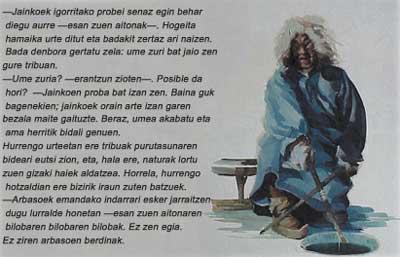
Can they be? Are they not always? No, of course, and less evil that is so. Otherwise, species would be very variable and life would not be viable, in part the components of life need stable structures.
The truth is that living beings have many changes throughout their lives in genetic material. Every time the cell doubles, whether to reproduce or not, the biochemical equipment must double millions of data. Biologists call this copy the replication of DNA. This team responsible for replication is a very competent and fast worker, but it also has limitations and, although occasionally, it makes mistakes. Mutations are a consequence of these errors.
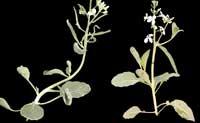
But useful information is only encoded in one part of DNA: 95% of the genome does not encode anything. This is what experts say. If this is true, there is no reason to worry: although there are errors, almost all occur in parts that are not important for the protein production process.
Male contribution
Although mutations occur unexpectedly and unplanned, they lead to evolution; to evolve, living beings need mutations. The ability of the tribe of history to cope with cold is the result of mutations.
How is it possible? This is the ability to adapt the secret: from time to time a 'different' is born in the tribe, although it only has a small difference caused by a simple mutation. If the newborn adapts better to the environment than his parents, this small mutation will be successful and will be transmitted from generation to generation; over time, those who have that mutation will advance.
Unfortunately, some diseases also advance in the same way.
However, it is not enough for a mutation to succeed: it must be transmitted by inheritance. But not all mutations are transmitted. So, how does it happen? Can the body control it? There is still no answer to these questions, inheritance is a dark mechanism. But experts have data to start creating hypotheses.

Men have more mutations than women, that is, the genome of man has more changes than women. Why? According to experts, it is a matter of sperm. The man does not stop innovating sperm until his death and in the process of elaborating each sperm a replication occurs. As for reproduction, the man has to make many copies, but the woman develops with few eggs throughout her life. Consequently, there are more mutations than in the sperm eggs. This is called the theory of Mutagenic man.
Footprint of elderly people
To analyze the details of the Mutagenic Man theory, California biologists have chosen the disease of achondroplasia. It is the most frequent type of nanism and is one of the genetic diseases that only men transmit. It is a curious disease. Being genetic occurs without apparent reasons: 'Suddenly' a child of a generation is born sick. But the disease is not a mystery: the cause is a certain mutation that has been the father's sperm.
The researchers, led by biologist Irene Tiemenn-Boege, found strange trends in the number of mutations and in the number of children born with achondroplasia.
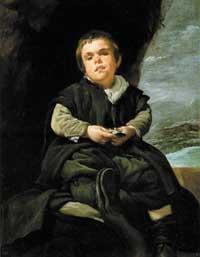
A group of men investigated the frequency of this mutation. They expected that the older ones would study, the more mutations they found. However, despite the mutation, a young father does not transmit to his children as easily as an older father. This means that the age of the parent is important for transmitting an inheritance mutation.
The mutation of origin of nanism is double in men of fifty years old than in men of twenty. Along the same lines, children with nanism are five times more numerous in the cases of parents of fifty years than in those of twenty. It seems that the mutation has much more possibilities to thrive if your father is older. That is curious: and why does that happen? Scientists have not found any explanation.
Origin of the mutation
Let's analyze the relationship between mutations and inheritance. In the process of formation of sperm is necessary the replication, that is, the copy of the genetic material, so there will be mutations but not in all sperm. Some will have the mutation of Nanism, but most will not.
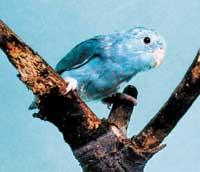

Having worked for a lifetime, older men have created more hopes than young people, so they have replicated more and have to have more mistakes than young people. Is this argument logical? Apparently yes. However, it is not clear what the copy model is. If each copy is made from the last copy, there will be more and more mutations in sperm, since the error once the duplicate copy is made advances. But if the model is the only cell that is "saved" the whole life of man, it is not logical to accumulate errors. It is probably an intermediate case, that is, from time to time the body will have to renew its model. It may be so, but biologists do not know exactly how the process happens.
However, in general, most sperm cells will not have mutation. What happens in reproduction? If the oculus is fertilized by a person with mutation, a sick child will be born. But most will not have mutation, so there is little chance of transmitting it. Or not? Perhaps, when the father is older, sperm carrying mutation fertilizes the eggs more easily, but it is not clear why this ease increases with age.
This type of doubt is common in biology and science in general. Many times, as the work advances, more questions arise, which sometimes increase faster than the answers. What is the effect of age on mutations? Does replication occur the same in all cases? Scientists also pose more general questions: Can the mutation investigated be taken as a model? Perhaps it is not a very typical mutation. What about the mutations transmitted by women? Similar trends?
When scientists publish an investigation, the path does not end. Usually the opposite occurs: more lines of research are opened. And sometimes that's a satisfaction, but sometimes you can despair.
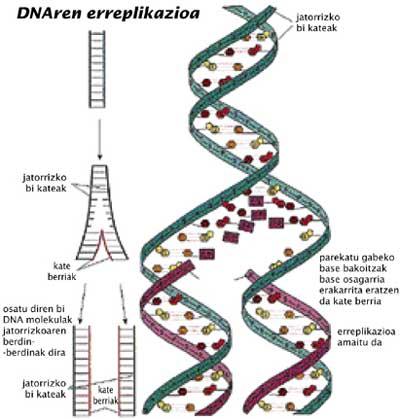
Abundant or scarce? Mutations are clearly scary: they are the origin of many diseases. However, genetic adaptation is, in many cases, an advantage that is achieved through mutations. So what do the mutations bring? Advantage or damage? If we consider it as an advantage, it will seem to us to occur rarely and vice versa. Although in replication (copying process of genetic material) correction systems are used, errors occur. The numbers are representative: in the human being, for example, whenever the genetic material of a cell is copied, an average of 120 errors occur. Go! It's a lot. This is because the replication apparatus makes an error in one of every 50 million bases. Seen like this, it is not so much. In addition, it must be taken into account that a thousand bases are copied in a second. Moreover, harmful mutation in a cell does not mean damage to the entire organ. For example, if a "serious" mutation occurs in an eye cell, we may not be able to synthesize a photoreceptor. But if this photoreceptor is synthesized well in all cells of the environment, of course, we will not lose our eye or be blind. In the case of sperm and egg, however, the new organism will develop through a single copy of the genome, so the defects that occur in replication are much more dangerous. Therefore, errors in the synthesis of sperm are more important than those that occur in other cells of the body. |
Set of mutations in the amino acid table
The genetic code is a code to make proteins per piece, that is, to form a certain protein, being a chain, is a code that indicates the elements of one in one. And each element of the chain (each amino acid) is encoded by a trio read in the RNA chain (DNA copy). In the RNA three consecutive bases are read and an amino acid is added in the chain. The trios are called codons and the code that compose them can be seen in the following table.
For example, if you read AAG, the amino acid to introduce is lysine (Lys) and not any other, the UCU codon encodes serine (Ser), AAD arginine (Ed), etc. Similarly, as can be seen, the code indicates that the string has been terminated by one of the UAA, UAG or UGA codes.
What happens when there is an error? For example, if instead of introducing a G into the code an U is introduced and the GGU becomes GUU, a glycine (Gly) is replaced by a valine (Val). Depending on the element that changes in the amino acid sequence, a protein can lose the ability to perform its function.
The same happens if a mutation causes the end signal to appear, for example, if the UGC codon becomes UGA, the elbow will stop the protein synthesis instead of introducing the cysteine (Cys) that originally corresponds to it. In these cases only one part of the protein is synthesized, so it cannot fulfill the function, for example, instead of forming a chain of 1,500 amino acids, it will form only that of the first 350.
However, other mutations have no consequences. For example, if an error occurs in the ACA codon and becomes ACG, there is no problem, since both codons encode the same amino acid: treonine (Thr).
In addition, sometimes there are intercalations of bases, expulsions and mutations of several bases, which in most cases have serious consequences if they occur in the coding parts of proteins.
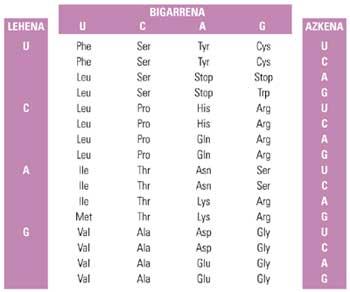
Repair as you copy It is the only biomolecula that resolves DNA cells. All others, when they have errors, are replaced, that is, the old man is dissolved and becomes a new one. No wonder, since DNA keeps the information. DNA, being a molecule, depends on the chemical and physical effects, so the cell has developed a series of resources to deal with these typical effects. Ultraviolet light, radiation, or chemical substances can cause damage to this molecule, so it should be protected from them. But in addition to external effects, when copying DNA, the cell also produces errors. When one base is replaced by another, the two branches of DNA do not bind properly at that point. In fact, a G-base of a branch always has a C-base in the other and an A-base T. Any other combination is an error and physically does not fit well. Not moderate. With these inadequacies, the cell corrects DNA defects immediately after its replication. A protein detects the failure and launches the repair process. Other proteins release this part of the DNA, which was rolled up, and introduce the direct base corresponding to that place. In this way it is possible to minimize errors to avoid mutations. However, mutations arise. |
Why was sex born?
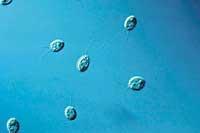
Scientists have been wondering for a long time. Life arose without sex; the 'first' living were microorganisms and were reproduced by processes such as folding, such as current microorganisms. But from an evolutionary moment a sexual reproduction was developed in different living beings, that is, they exchanged genes with another of the same species to reproduce. With some genes from his father and others from his mother, the next one gathers the intermediate characteristics.
The truth is that it does not mean that genes are “chosen”. The successor, however, has all the genetic information of the father and mother, so we have two copies of each chromosome. But a very complex process causes his successor to block some genes from his father and others from his mother to use the 'unique' group.
What advantage does it have? It is not very clear, but there are several hypotheses. One of them affirms that sex contributes to evolution. In short, mixed the genes of the parents, the descendant can have better genetic characteristics than the parents. But to do this, the father and mother must have different genes, that is, have mutations and, from the evolutionary point of view, advantageous mutations.
To confirm this hypothesis, N. The British biologist Cognrave analyses an intermediate case in which he experiments with the alga Chlamydomonas reinhardtii, capable of experiencing both sexual and asexual reproduction. It has reproduced some algae asexually and others sexually, comparing the increases of both groups after the birth of many generations.
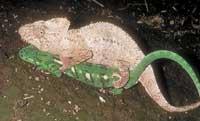
The result is clear: sexual reproduction increases the advantage of adaptation in cases of beneficial mutations. But beneficial mutations have to be necessarily, that is, the mutations that help in the adaptation process have the advantage. That is the driving force of evolution.
And when are mutations beneficial? The answer is simple: in nature there are beneficial mutations in cases of very large populations. In these populations all types of mutations will exist, both beneficial and harmful; evolution, of course, is used of the benefits to advance.
Buletina
Bidali zure helbide elektronikoa eta jaso asteroko buletina zure sarrera-ontzian











